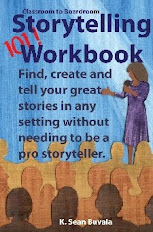
Is storytelling a "switch" you can flip to make things happen in your corporate or personal life? I was recently on a panel-discussion show where one of the other experts said that he believes that storytelling is not a lever that can make things happen. Is he right?
Yes, storytelling can be used to inspire and create new behaviors but you need to know how to use storytelling techniques.
Wandering through one of these home-improvement warehouse stores the other day, I passed through the aisle that has electrical supplies. Some of these stacks of bulk supplies included hundreds of wall switches of various types. What do I know- I thought a switch was a switch? Apparently, different lighting situations require different wall switches.
However, any one of these switches by themselves cannot turn on a light in my house. I need to have it installed by a trained electrician who will put it in a box, hook up the power and be sure that the bulb in the light socket the switch is connected to is actually a good bulb.
By itself, the switch is just a tool. In context and setting, it can bring light to the whole room
Storytelling is like a switch, too. Here are four ways that storytelling goes from a "prop tool" in your bag of communication tricks to a vital part of lighting up a room.
1. Storytelling needs to be installed.
I cannot buy a single light switch and throw it onto the floor of a darkened room hoping it will give me light. I need someone well-trained to install it properly. So, too, there are plenty of books published where you can get stories for trainers, speakers and presenters. In and of themselves, these stories are not very useful. You cannot just toss a story out and hope it works. However, properly presented by someone who knows how to tell a story, a tale from those collections might be able to bring understanding to the listener.
2. Storytelling needs to be in the right setting.
I could just hook up that switch to some wires in my house and leave it hanging there, hoping for the best. Of course, if I do that, my house might catch on fire or someone might be electrocuted from exposed wires. With storytelling, too, I need to be able to place the story in the correct context for my audience. Stories not properly presented or framed for an audience have burned down many presenters for either being too complex or simply childish.
3. Storytelling needs energy.
A light switch installed but without electricity flowing will do nothing at all. Stories presented by boring presenters will be boring. Storytelling won't fix a presenter that doesn't like to present.
4. Different audiences need different types of storytelling.
I may have installed and energized a light switch, but if the bulb is broken in the socket, there will not be any light. I may have a story that I love to tell, but if the audience is not comfortable with the story, my storytelling will fail. Not every story is for every audience. If you run 115 volts of power to a bulb that needs 220 volts, you will not get much light. Choose your stories based on the needs of the audience, not your needs as a presenter.
Hundreds of light switches on the shelf at the home-improvement store looks impressive, but they are useless unless I know what I am doing with those switches. Storytelling can look like such an impressive idea, but, it too, needs to be used with the right know-how.
Done right, you can switch on great understanding and teaching with storytelling. You can light up a corporate boardroom or your child's bedroom- or any room in-between.
***********
The official blog for K. Sean Buvala, storyteller and storytelling coach.





No comments:
Post a Comment